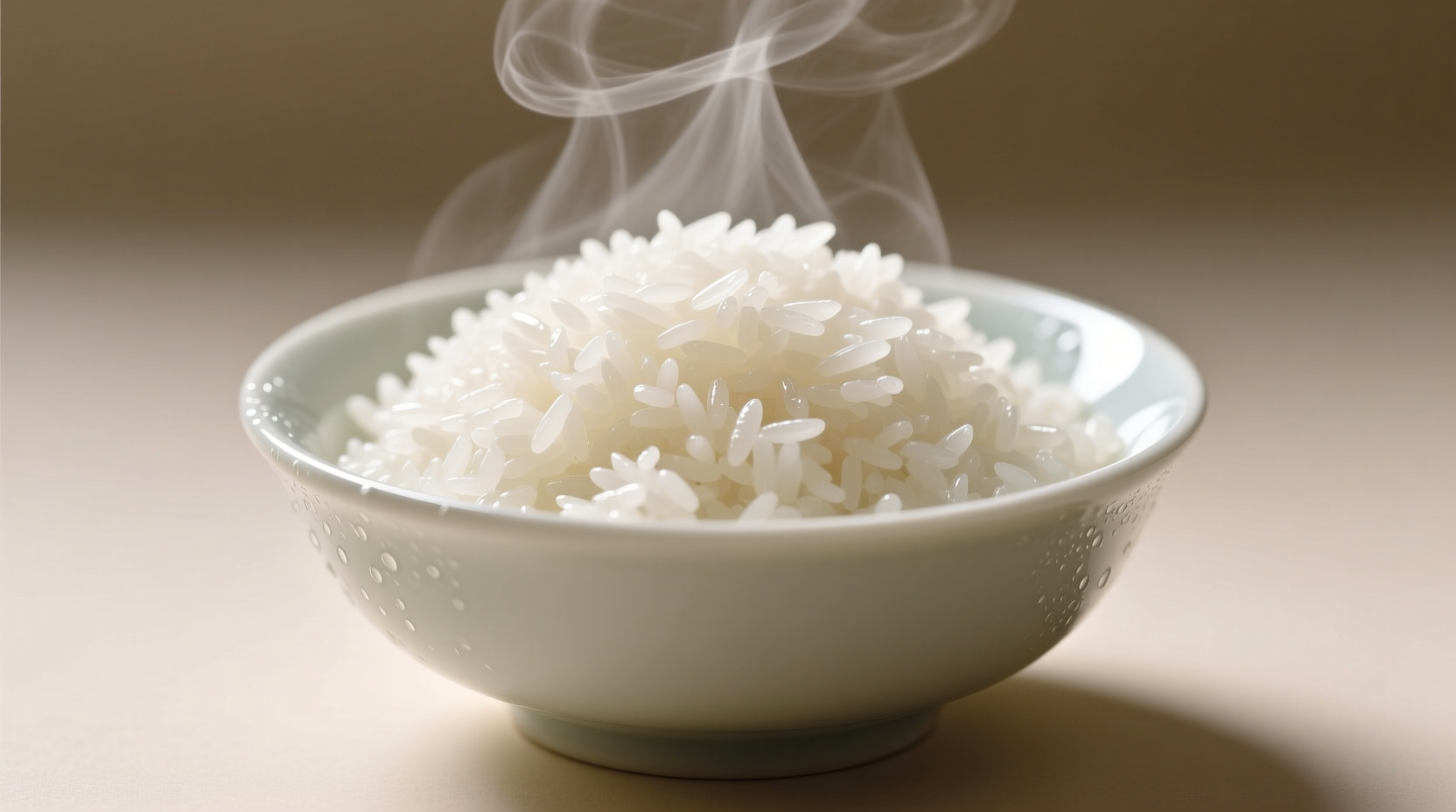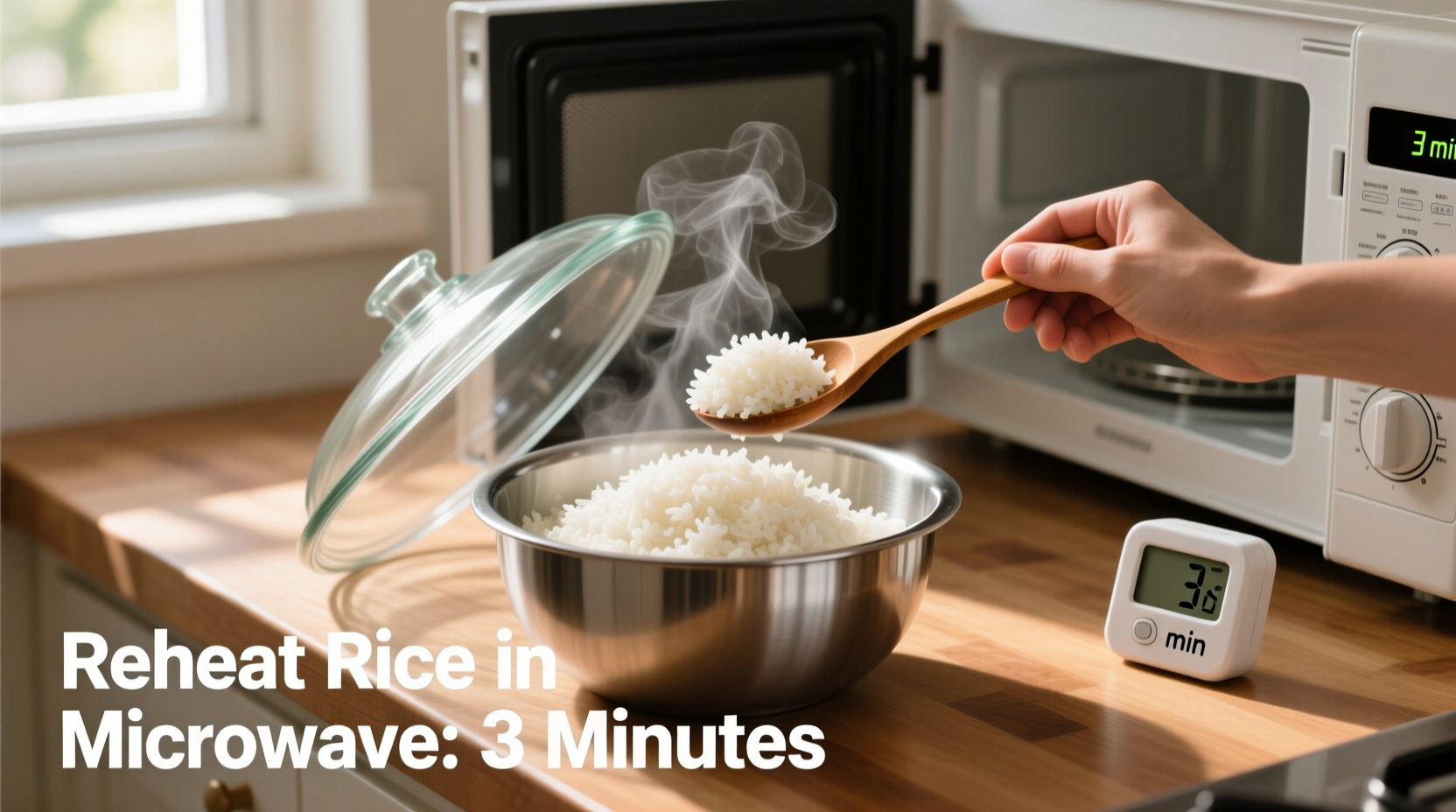The best way to reheat cooked rice is by adding 1-2 tablespoons of water per cup of rice, covering it, and heating on low in the microwave for 1-2 minutes or on the stovetop for 3-5 minutes. This method restores moisture while maintaining texture and ensures food safety when done properly.
Reheating rice properly isn't just about convenience—it's about preserving that perfect fluffy texture while avoiding food safety risks. Many home cooks struggle with dry, hard, or unevenly heated rice, but with the right techniques, you can consistently revive leftover rice to near-fresh quality. In this guide, you'll discover scientifically backed methods that professional chefs use to maintain rice quality during reheating.
Why Proper Rice Reheating Matters
Rice undergoes starch retrogradation when cooled, causing it to harden and lose moisture. The USDA Food Safety and Inspection Service explains that improperly stored or reheated rice can harbor Bacillus cereus, a bacteria that causes food poisoning. Understanding the science behind rice reheating helps you avoid common pitfalls while achieving restaurant-quality results at home.
Step-by-Step Reheating Methods
Microwave Method (Fastest Option)
Perfect for busy weeknights when you need rice ready in minutes:
- Place rice in microwave-safe container
- Add 1-2 tablespoons water per cup of rice
- Cover with damp paper towel or lid
- Heat on 50% power for 1-2 minutes
- Fluff with fork and check temperature (must reach 165°F/74°C)
This technique works because lower power settings allow moisture to redistribute evenly without creating hot spots. Food scientist Dr. Timothy Bowser notes that USDA guidelines require reheated foods to reach this temperature to eliminate potential pathogens.
Stovetop Method (Best Texture Preservation)
For superior texture control and restaurant-quality results:
- Add rice to non-stick pan with 2 tablespoons water per cup
- Cover with tight-fitting lid
- Heat on lowest setting for 3-5 minutes
- Listen for gentle sizzle indicating steam circulation
- Remove from heat and let stand covered for 2 minutes
- Fluff gently before serving
| Reheating Method | Time Required | Best For | Texture Result |
|---|---|---|---|
| Microwave | 2-3 minutes | Quick meals, single servings | Good (can be uneven) |
| Stovetop | 5-7 minutes | Multiple servings, best texture | Excellent (most consistent) |
| Rice Cooker | 8-10 minutes | Large batches, hands-off approach | Very Good |
| Oven | 15-20 minutes | Baked rice dishes, large quantities | Good (drier finish) |
Rice Cooker Method (Most Hands-Off)
Leverage your existing kitchen equipment for consistent results:
- Add 2 tablespoons water per cup of rice to cooker
- Use "reheat" function or cook on regular setting for 8-10 minutes
- Let stand 5 minutes before fluffing
This method maintains optimal moisture levels through controlled steam distribution—similar to commercial rice warmers used in restaurants.
Food Safety Timeline: When to Keep or Toss
Understanding rice storage limits is critical for food safety. Based on FDA guidelines:
- Fridge storage: Cooked rice remains safe for 3-4 days when stored in airtight containers
- Room temperature: Discard rice left out more than 2 hours (1 hour if above 90°F/32°C)
- Freezer storage: Properly frozen rice maintains quality for 6-8 months
Signs rice has spoiled include sour smell, slimy texture, or visible mold. When in doubt, throw it out—Bacillus cereus toxins aren't destroyed by reheating.
Troubleshooting Common Reheating Problems
Dry or Hard Rice
Solution: Add 1-2 teaspoons water, cover, and heat 30 seconds more. For severely dried rice, sprinkle water over surface and let sit covered for 5 minutes before reheating.
Soggy or Mushy Rice
Solution: Spread on baking sheet and heat in 300°F (150°C) oven for 5-10 minutes to evaporate excess moisture.
Cold Spots in Reheated Rice
Solution: Always stir or fluff rice halfway through reheating. For microwave method, arrange rice in ring shape rather than piling in center.
Pro Chef Tips for Perfect Reheated Rice
Professional kitchens use these advanced techniques to maintain rice quality:
- Freeze properly: Spread cooked rice in thin layer on baking sheet before freezing, then transfer to containers. This prevents clumping and maintains individual grain integrity.
- Add fat: A small amount of butter or oil (½ teaspoon per cup) added during reheating creates a protective barrier against moisture loss.
- Steam revival: For Japanese or sushi rice, place in bamboo steamer over simmering water for 3-4 minutes—this restores the delicate texture better than other methods.
"The key to reviving rice is understanding that you're not just reheating—it's a moisture restoration process," explains Chef Hiroshi Tanaka, culinary director at Tokyo's Kappo Sushi. "Adding liquid and creating steam circulation mimics the original cooking environment, which is why covered methods outperform dry heating techniques."

Special Considerations for Different Rice Types
Not all rice reheats the same way. Adjust your technique based on variety:
- Jasmine/Basmati: Use minimal water (1 tsp/cup) to preserve delicate fragrance
- Sushi rice: Add rice vinegar mixture (1 tsp rice vinegar + ½ tsp sugar per cup) before reheating
- Brown rice: Requires 1-2 extra minutes and slightly more water due to higher fiber content
- Fried rice: Reheat dry in wok with small oil amount to restore crisp texture
When Reheating Isn't Recommended
While most cooked rice reheats well, certain situations warrant caution:
- Rice left at room temperature for more than 2 hours
- Previously reheated rice (reheat only once)
- Rice with dairy-based sauces (risk of separation)
- Signs of spoilage (sour smell, slimy texture)
The Centers for Disease Control and Prevention reports that Bacillus cereus causes approximately 63,000 foodborne illnesses annually in the US, with rice being a common vehicle. Proper reheating to 165°F (74°C) is essential for safety.
Conclusion: Mastering Rice Reheating
With these science-backed methods, you can transform leftover rice into dishes that taste freshly prepared. The key principles—adding moisture, using gentle heat, and ensuring proper food safety—apply across all rice varieties and cooking methods. By understanding the why behind each technique, you'll consistently achieve perfect results whether you're reviving last night's dinner or preparing meal-prepped lunches.
Frequently Asked Questions
Can you reheat rice more than once?
No, you should only reheat rice once. Multiple reheating cycles increase the risk of bacterial growth and foodborne illness. The Food Standards Agency recommends reheating rice to 165°F (74°C) only once after initial cooking.
Why does reheated rice sometimes cause food poisoning?
Rice can contain Bacillus cereus spores that survive cooking. When rice is left at room temperature, these spores multiply and produce heat-resistant toxins. Proper refrigeration within 1-2 hours of cooking and reheating to 165°F (74°C) minimizes this risk.
How much water should I add when reheating rice?
Add 1-2 tablespoons of water per cup of cooked rice. For drier rice varieties like jasmine, use the lower amount. For brown rice or previously frozen rice, use the higher amount. The water creates steam that redistributes moisture throughout the rice grains.
What's the best way to reheat fried rice?
Reheat fried rice in a hot wok or skillet with ½ teaspoon of oil per cup. Stir constantly for 2-3 minutes until heated through. This method restores the characteristic slightly crispy texture better than microwave reheating, which can make fried rice soggy.
Can you freeze cooked rice for later reheating?
Yes, cooked rice freezes exceptionally well. Spread in a thin layer on a baking sheet to freeze individually, then transfer to airtight containers. Frozen rice maintains quality for 6-8 months. When reheating, add 1-2 teaspoons water per cup and use microwave or stovetop methods without thawing first.











 浙公网安备
33010002000092号
浙公网安备
33010002000092号 浙B2-20120091-4
浙B2-20120091-4